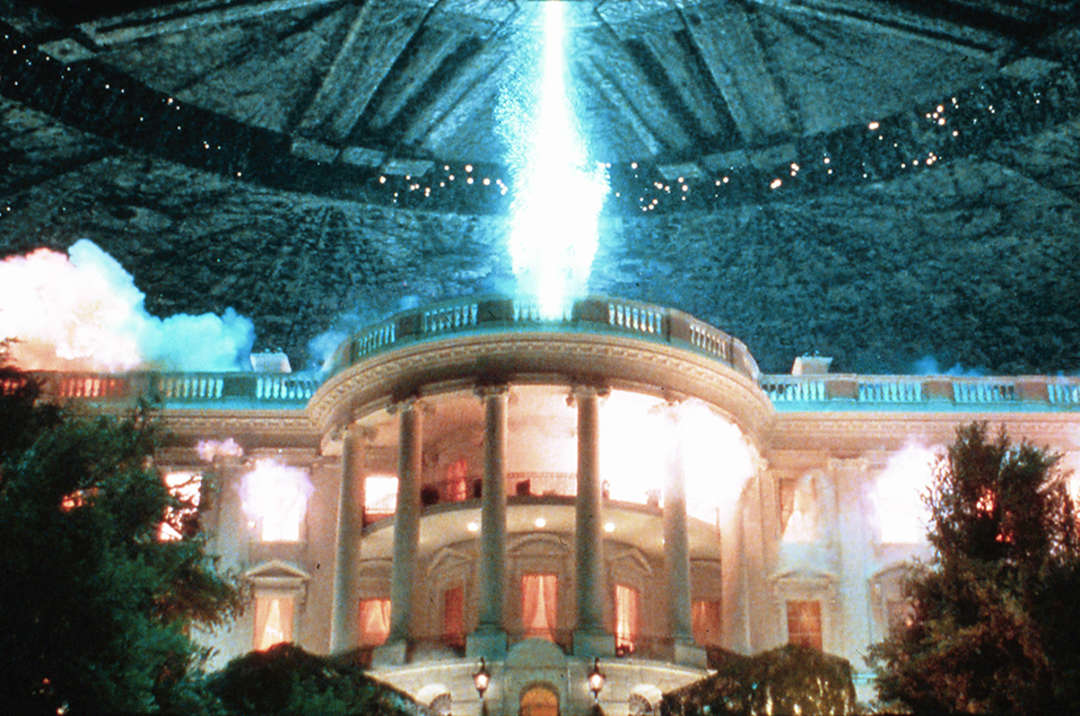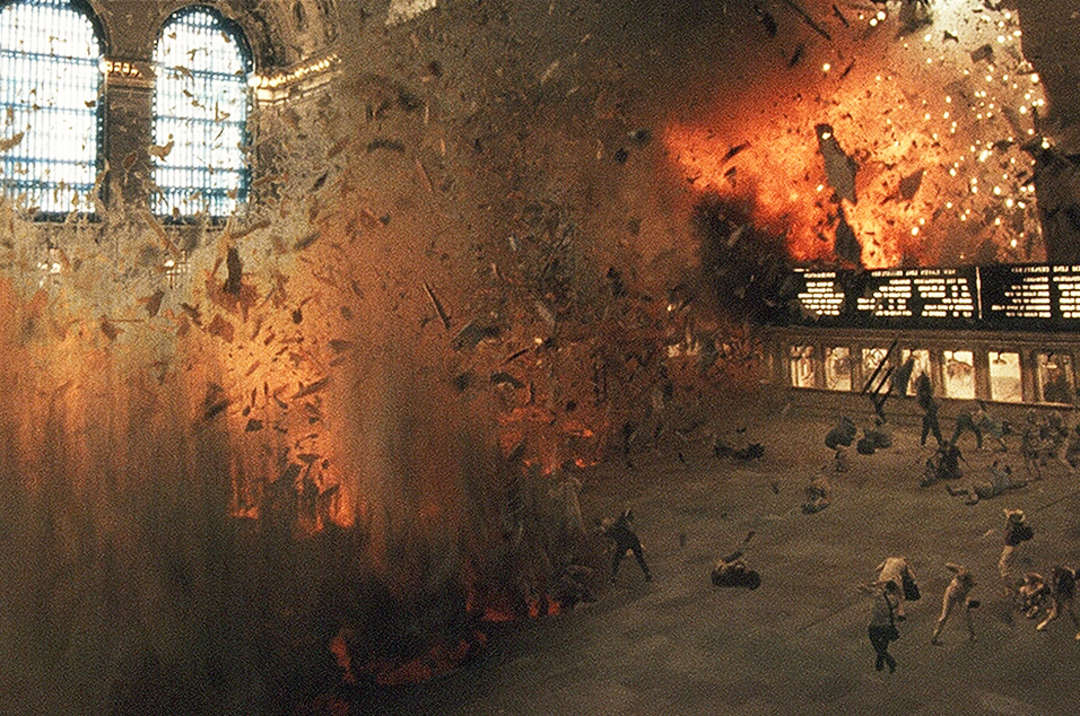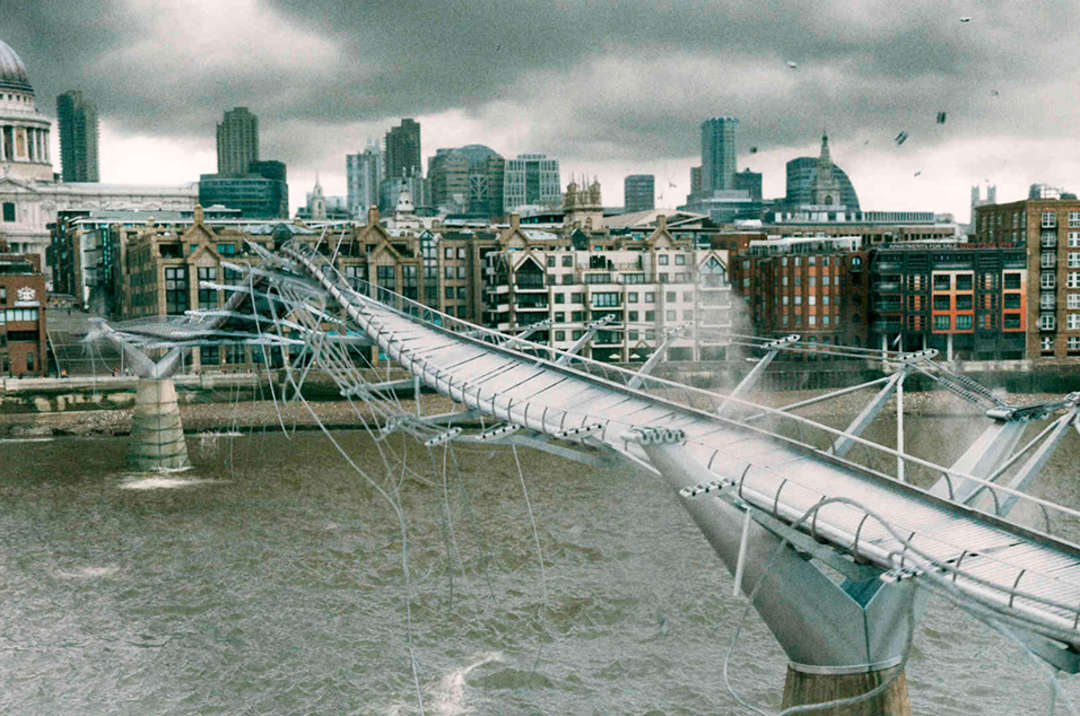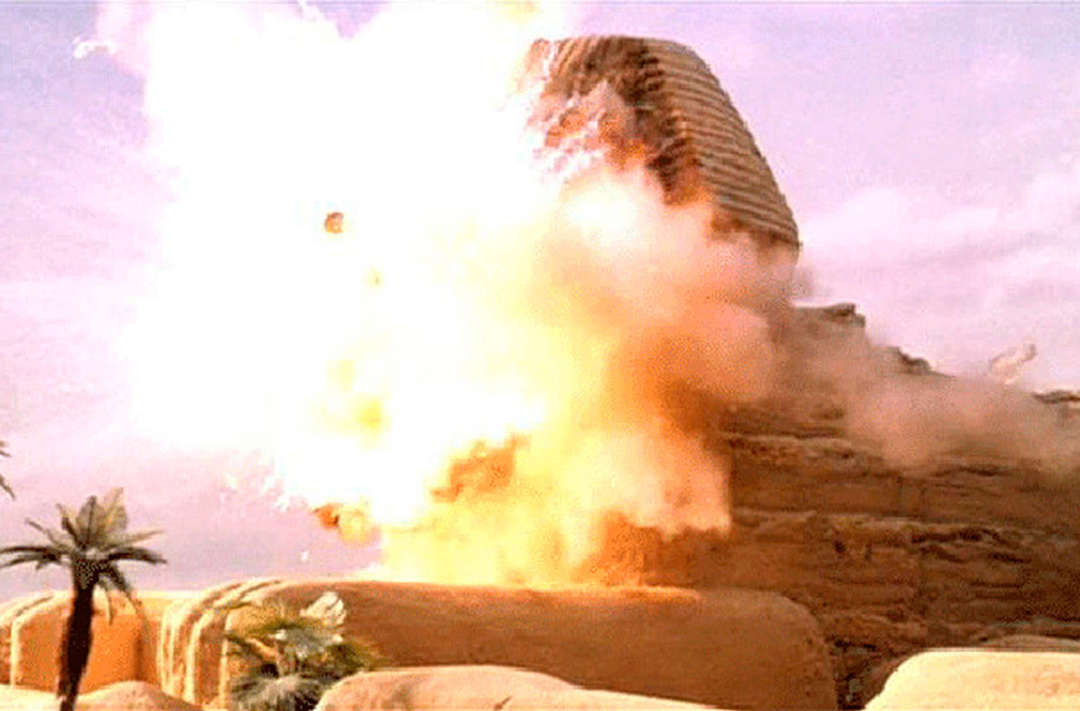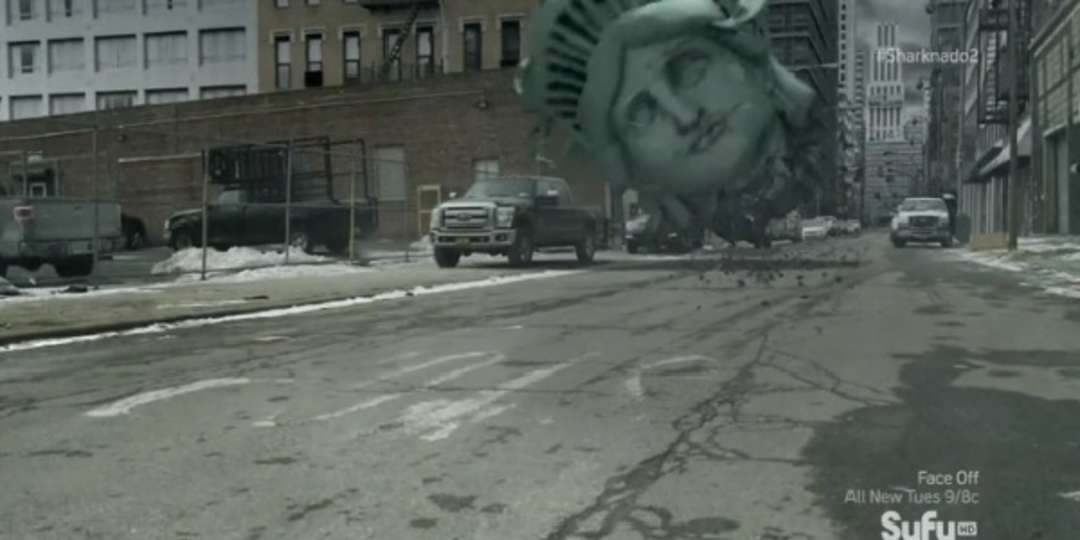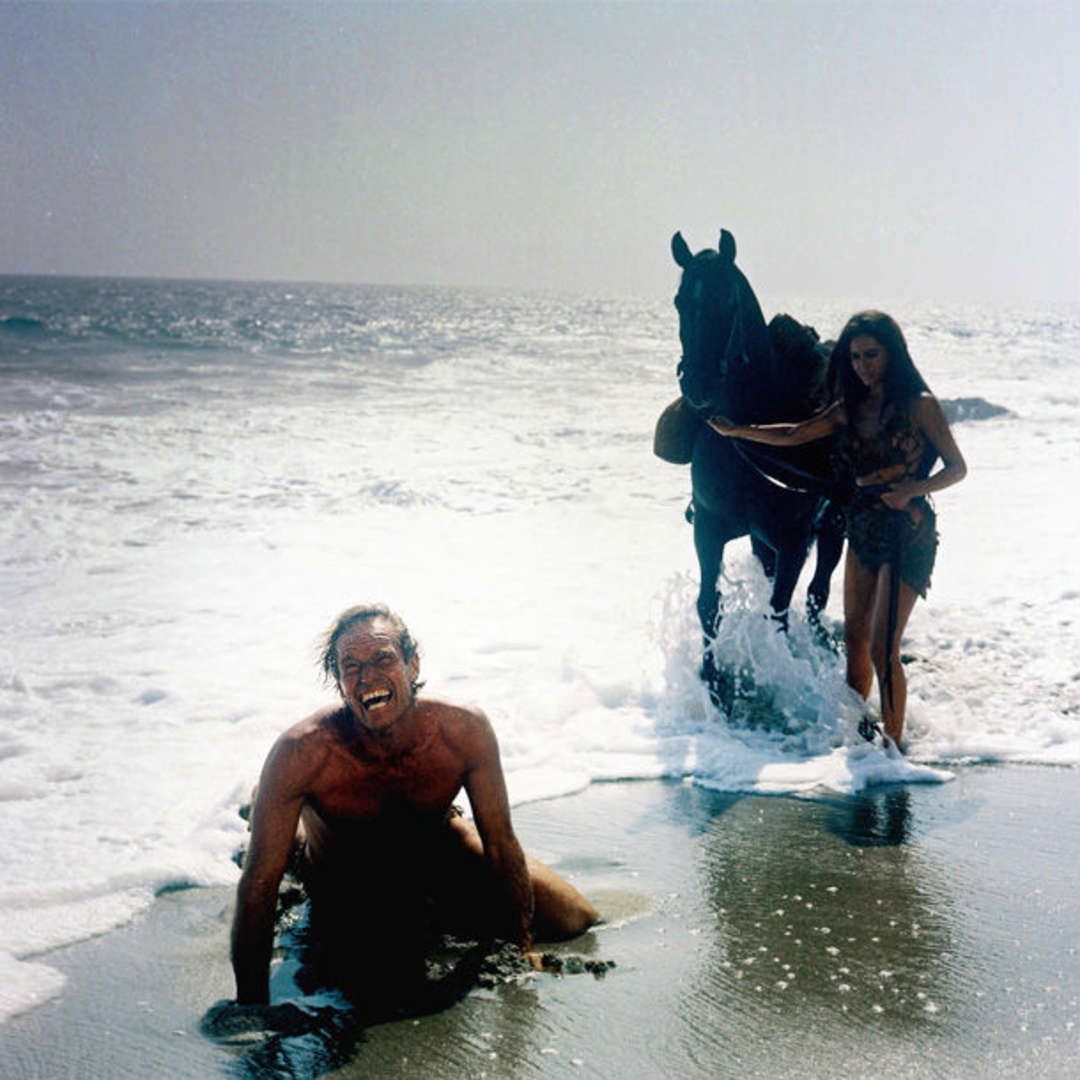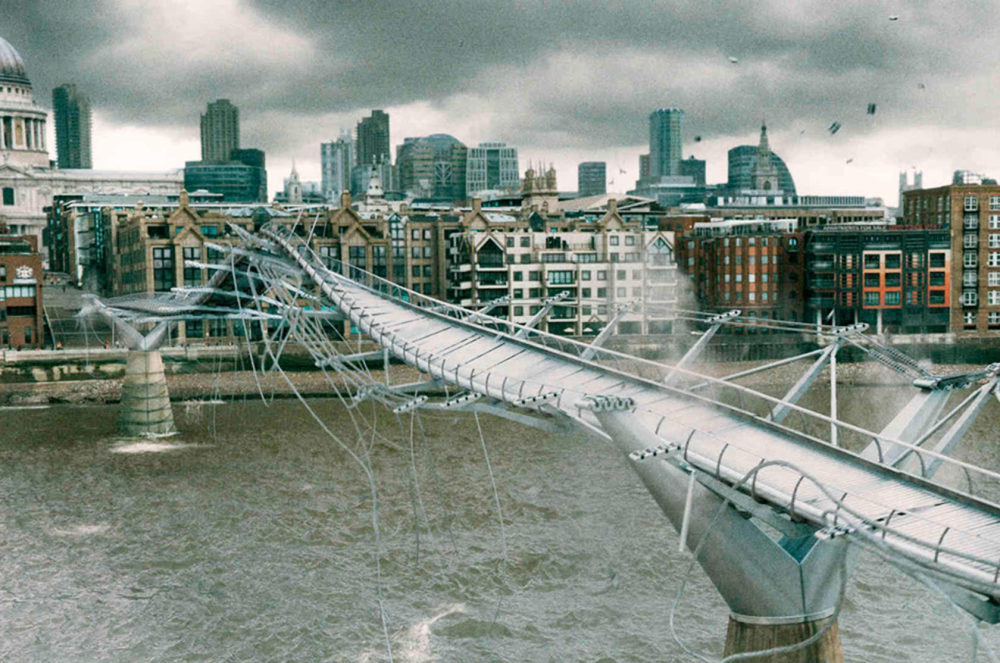
It’s one of the most iconic moments in cinema: A man and a woman on horseback trot along a deserted beach when something on the horizon catches their attention. Stunned, the man slowly dismounts and looks up at the mysterious object.
“Oh my God,” he says. “I’m back. I’m home.” His shock turns to anger as he falls to his knees and begins punching the sand. “You maniacs! You blew it up! God damn you! God damn you all to hell!” As the camera pans away the mysterious object comes in to view: It is the Statue of Liberty, corroded and half-buried. Only landscape surrounds it; all traces of civilization have vanished.
The film is “Planet of the Apes” (1968) and the man is George Taylor, an American astronaut played by Charlton Heston who has been stranded on what he thought was a distant planet, a strange world where human beings are enslaved by apes. The appearance of the Statue of Liberty, however, changes the story for both Taylor and the audience. He was never in another world at all; the “Planet of the Apes” is Earth itself, hundreds of years in the future. Human civilization, it seems, was wiped out long ago, most likely by a nuclear apocalypse.
The appearance of Lady Liberty at the end of the film serves as a reminder of the highest ideals of a species that never lived up to its potential. The optimism and quiet strength of Bartholdi’s statue — a world famous symbol of equality and freedom — mixed with the bleak setting of a post-human world makes for a bitter cinematic brew.
The Mysterious Allure of the Apocalypse
“Planet of the Apes” is far from the only apocalyptic movie that has enlisted the help of landmarks to heighten the tragic impact of its chosen doomsday scenario. In fact, the destruction of popular landmarks, even whole cities, is one of the most popular tropes in American cinema. So-called disaster movies have been a part of Hollywood since the ‘30s, but the ‘90s saw them balloon in popularity, a trend that hasn’t stopped to this day.
So what’s the deal? What is it about the destruction of famous buildings, bridges and statues that both filmmakers and audiences find so attractive?
San Francisco’s Golden Gate Bridge is a symbol of hope and ingenuity: An extraordinary feat of engineering realized in the midst of the Great Depression. Here it is being attacked by an octopus monster in the 1955 film “It Came From Beneath the Sea.” Via NME.
While the answer to this question varies from case to case, it mostly comes down to the same reason people like watching frightening films in general: There is something paradoxically comforting about seeing your worst fears realized. As Sigmund Freud discovered while researching for his 1922 bookBeyond the Pleasure Principle, trauma victims often replay the memory of their trauma in order to gain a measure of imaginative control over it. Sometimes, this even goes as far as acting out the traumatic scenario in real life, a phenomenon Freud labeled “repetition compulsion.”
When The White House is destroyed in films — as it is here, in Roland Emmerich’s “Independence Day” (1996) — it provokes an unsettling feeling of national instability. Via NME.
A similar principle explains the popularity of horror movies. If one’s fears are projected on a screen, they become less powerful than they would be if they were allowed to roam the dark corners of the mind unchecked. As in exposure therapy, the viewer of a horror movie will often leave the cinema less fearful than they were when they entered it.
New York’s Grand Central Terminal is pounded with meteors in Michael Bay’s “Armageddon” (1998). It still seems more pleasant than Penn Station. Via NME.
The Visceral and the Abstract
While horror movies allow people to work through their worst visceral fears in a safe setting, dystopian films accomplish something similar for abstract fears, or anxieties related to politics and the far off future. If one feels perturbed about wealth inequality, why not stream the latest “Hunger Games,” which depicts a world in which inequality is taken all the way to its logical outcome? In a similar vein, “Planet of the Apes” allowed Cold War-era Americans to imaginatively experience a world that had been totally annihilated by nuclear war, a threat that loomed heavily on their minds at the time.
The Millennium Bridge in London takes a beating in “Harry Potter and the Half-Blood Prince” (2009). ViaNME.
Dystopian films often feature penetrating social commentary but, in my view, this is not the source of their popularity. The public finds these movies thrilling simply because humans have a fundamental drive to play out worst case scenarios. As with horror movies, this is even reassuring. The danger here is that these films might have a numbing effect on the viewer. Through the healing magic of cinema, real threats can take on the aura of fantasy.
The Sphinx gets a facelift in “Team America: World Police” (2004), a film that spoofed the tendency of Hollywood action movies to depict famous landmarks getting blown to smithereens. Via NME.
Scenes of landmark destruction combine the most exciting features of horror movies and dystopian films, a hybrid that is encapsulated by the quintessential disaster movie. On the one hand, seeing a familiar building destroyed is relatable, and thus scary in an immediate, visceral way. Many people have visited these places after all.
The Eiffel Tower takes a bow in “G.I. Joe: The Rise of Cobra” (2009). Via NME.
On the other hand, there is a metaphorical component at work whenever we see a landmark destroyed. Whether it be the White House or the Statue of Liberty, these structures embody established institutions and ideals. Their destruction on-screen presents the viewer with a thrilling reminder that civilization as we know it will someday come to an end. This is the dystopian dimension of these types of films, and it is present at some level in even such pulpy fare as “Sharknado 2” (2014), which includes a scene where the Statue of Liberty is decapitated (by sharks) and then rolls down the streets of Manhattan, crushing cars and pedestrians.
Even in a film as silly as “Sharknado 2: The Second One” (2014), the destruction of a monument is an unsettling — if also exciting — thing to watch. It reminds us of the fragility of our entire society. ViaWordPress.
The power of disaster films resides in the fact that they not only depict a whirlwind of destruction, but also a rupture in the social order, or what Lacanians would call the Big Other. To watch a monument be destroyed is to get a small taste of the apocalypse.
“Godzilla” was the most popular film franchise in mid-century Japan, a nation that had recently suffered the trauma of seeing two of its cities destroyed in nuclear attacks. This was not a coincidence. Still from “Godzilla, King of the Monsters!” (1956) Via Complex.
Architecture as Political Symbol
In a thoughtful film like “Planet of the Apes,” the apocalyptic effect of landmark destruction can be channelled into a dramatic social or political statement. When Heston pounds his fists and shouts “you blew it up!” it’s worth noting that he does not specify whether he blames the United States or the Soviet Union for the ultimate destruction of humanity. His cry would have been understood by audiences at the time as a call for an end to Cold War tensions, which had escalated to the point of being anexistential threat to humankind a short six years before the film’s release.
The final scene of “Planet of the Apes” (1968) finds Charlton Heston in agony as he contemplates the tragic destiny of humankind. Via SquidNova.
Today when we watch this scene, we are likely to be reminded of climate change or some other looming threat instead. In either case, the noble figure of the Statue of Liberty reminds us that humankind, for all its flaws, has stood for good things too. Whether it has ever lived up to these ideals is another discussion, but — watching Heston scream in agony — we empathize with his belief that the disappearance of human civilization is a tragic event.
The best disaster movies don’t just provide audiences with the cheap thrill of watching iconic architecture get torn apart. Done right, they can remind us that there are things in the world worth preserving.
Enjoy this article? Check out the first in our critical series on architecture at the movies: An Exploration of Gotham City, Urban Dystopia.


